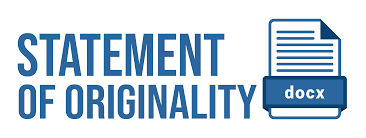Pemetaan dan analisis tingkat kerusakan hutan mangrove di Taman Nasional Kutai berdasarkan data satelit landsat ETM dan kerapatan vegetasi
Mapping and deforestation level of mangrove forest in Kutai National Park base on data satelite image of landsat ETM and vegetation density
DOI:
https://doi.org/10.30872/jipt.v1i2.434Keywords:
mapping, mangrove, level of damage, Kutai National ParkAbstract
Along with the increase in population in the Kutai National Park (Kutai NP) has raised the land issue of due to the need for living space and the exploitation of natural resources. This study is part of an effort to evaluate the condition of mangrove forests as a first step effort to protect mangrove forests as critical habitat for coastal Kutai NP. The research was conducted in March to April 2012, with the goal of evaluating and measuring vegetation cover and land use (Land use) mangrove forests in coastal Kutai NP. For this purpose, the data is used Landsat ETM + image with 7 bands that recorded in 2008. Process analysis using NDVI (Normalizet Difference Vegetation Index) composite channel by IR (bands 4 and 3), while the extent of the damage was analyzed using standard from Decree of Ministry of environment No. 201, 2004. Base on the research, Kutai National Park has the potential of ± 5192.54 ha of mangroves, mangrove forest ecological conditions in Kutai NP generally be in the grade is still good with vegetation density ranging between 967-1567 ind / ha, Kutai NP In some areas such as the Estuary Sangatta, bay and estuary Sangkima Lombok are areas that have experienced enough land conversion, overall mangrove forest that has been opened by ± 1845.85 ha or 26.2%. Mangrove forests are located close to residential vulnerable to land-use changes.
References
Departemen Kehutanan. Pedoman Inventarisasi dan Identifikasi Lahan Kritis Mangrove. Direktorat Jenderal Rehabilitasi Lahan Dan Perhutanan Sosial. Jakarta (2005)
English, S., C. Wilkinson, and V. Baker,. Survey Manual For Tropical Marine Resources. Australian Institue Of Merine Science. Townsville. (1994) 119-194 p
Food and Agriculture Organization. The World’s Mangroves 1980–2005. Forest Resources Assessment Working Paper No. 153. Food and Agriculture Organization of The United Nations. Rome (2007a ) 140 p.
Food and Agriculture Organization. Geografic Information System, remote sensing and mapping for the development and management of marine aquaculture. Food and Agriculture Organization of The United Nation, Rome, Italy. (2007b).
Giesen W, Stephen W, Max Z and Liesbeth S., Mangrove Guide Book for Southeast Asia, FAO and wetlands International (2007).
Jensen. J,R. Introductory Digital Image Processing, A Remote Sensing Perspective. Prentice Hall. New Jersey. (1998) 316p
Kathiresan, K.. Methods of Studying Mangroves Centre of Advanced Study in Marine Biology. Annamalai University (1999)
Kementerian lingkungan Hidup, Keputusan Menteri No. 201 tahun 2004 tentang Kriteria Baku Penentuan kerusakan Mangrove. ( 2004)
Moll Regine, 2011. Impact of mangrove and agriculture – dominated hinterland on carbon and nutrien biogeochemistri in the Segara Anakan Lagoon, Java Indonesia. Phd Thesis, Bremem University, German
Swain. P. H and Davis, S. M (ed). Remote Sensing the Quantitative Approach. British Library Cataloguing in Publication Data, Mcgraw- Hill. New York. (1978) 395p
Taman Nasional Kutai. Statistik Taman Nasional Kutai. Balai Taman Nasional Kutai. Bontang, Kalimantan Timur. (2011)








